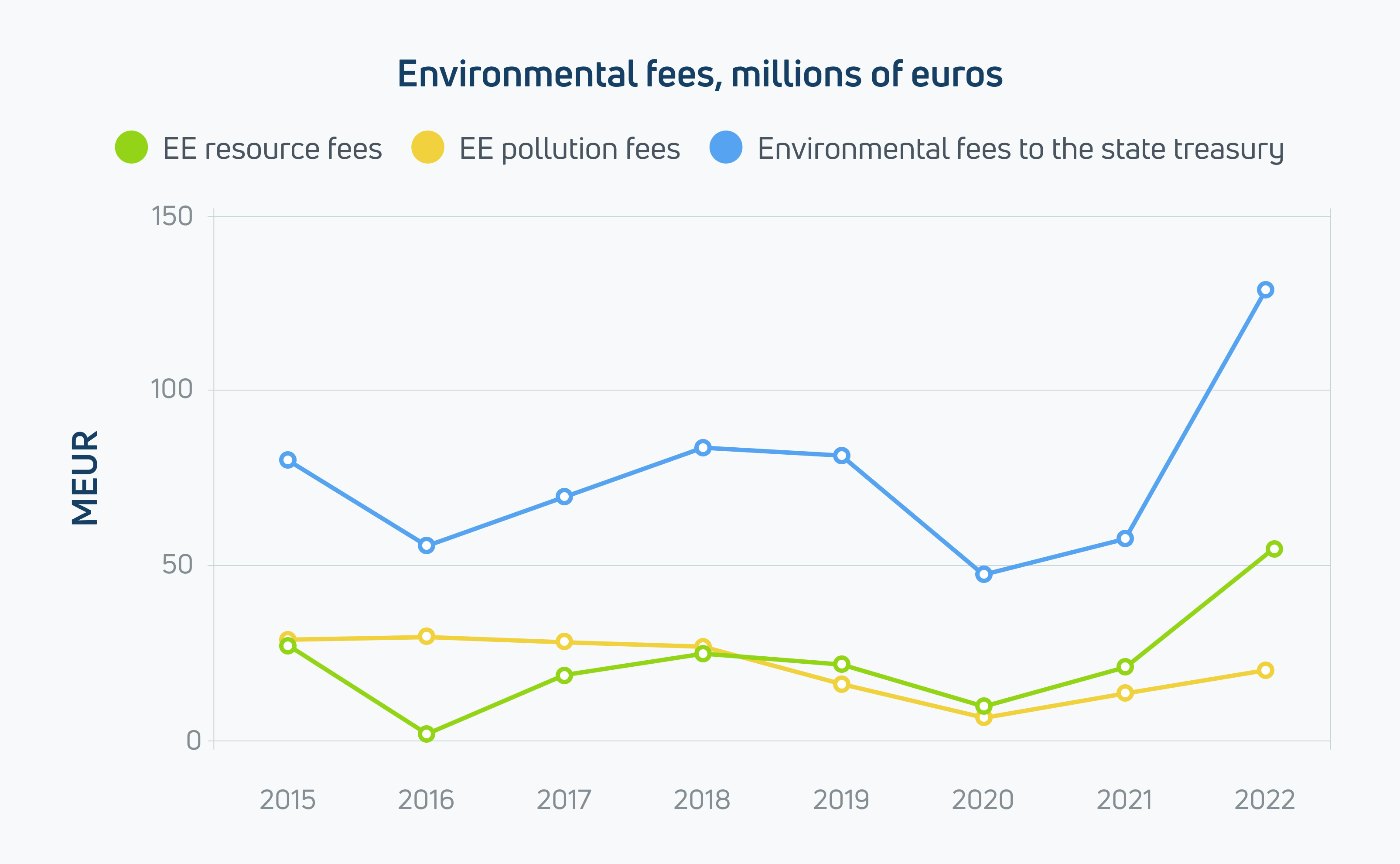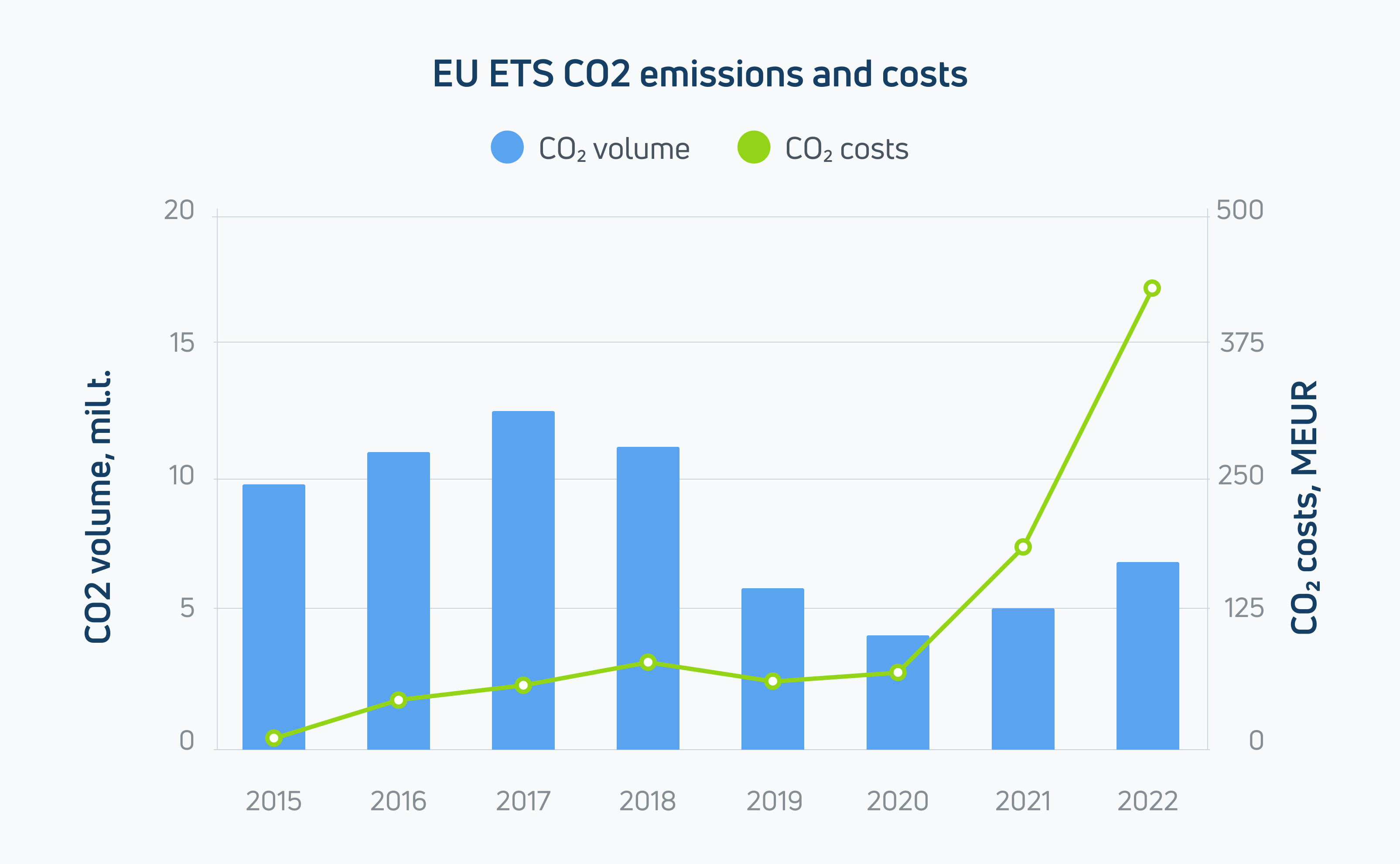Circular economy
Reducing waste and recycling waste
In the production of energy, Eesti Energia Group generates waste, which we recycle as a secondary raw material if possible. In addition, we use municipal waste and waste wood generated in Estonia and neighbouring countries as fuel in power plants to produce heat and electricity from materials unsuitable for other uses. In addition, we are exploring the possibility of using tire chips and waste plastics as fuel or raw material.
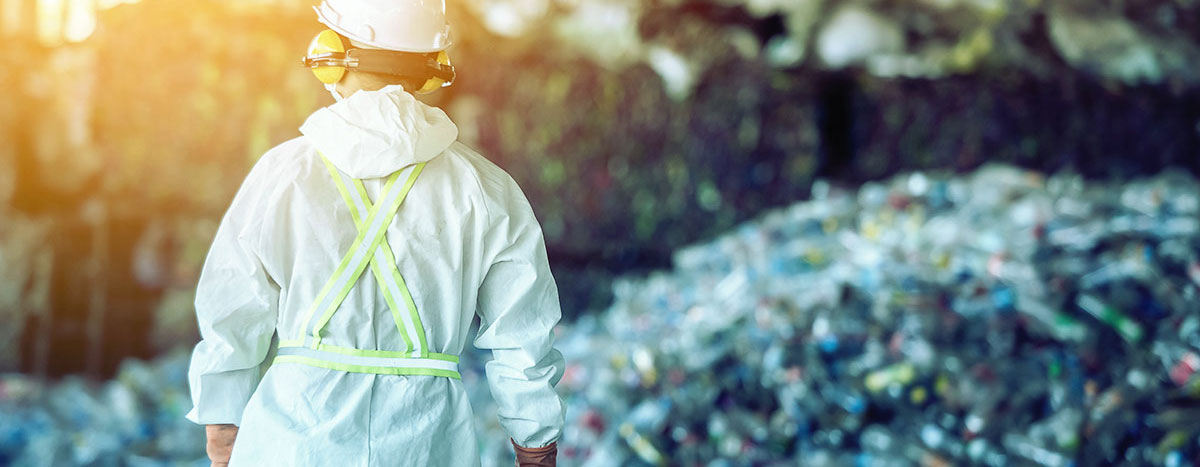
Reuse of waste generated in Estonian energy production
The extraction of oil shale necessary for the production of energy involves the formation of tailings (limestone) and the production of energy from oil shale generates oil shale ash. Both waste from energy production can be reused as a secondary raw material.
In 2022, we recycled more mining material than was generated during oil shale mining in the same year. We reuse mine material in road construction, in the construction of the foundations of solar parks. We will also continue the research into the possibilities of reusing oil shale ash in the plastics industry, the construction pellet industry, agriculture, road construction and the production of geopolymers.
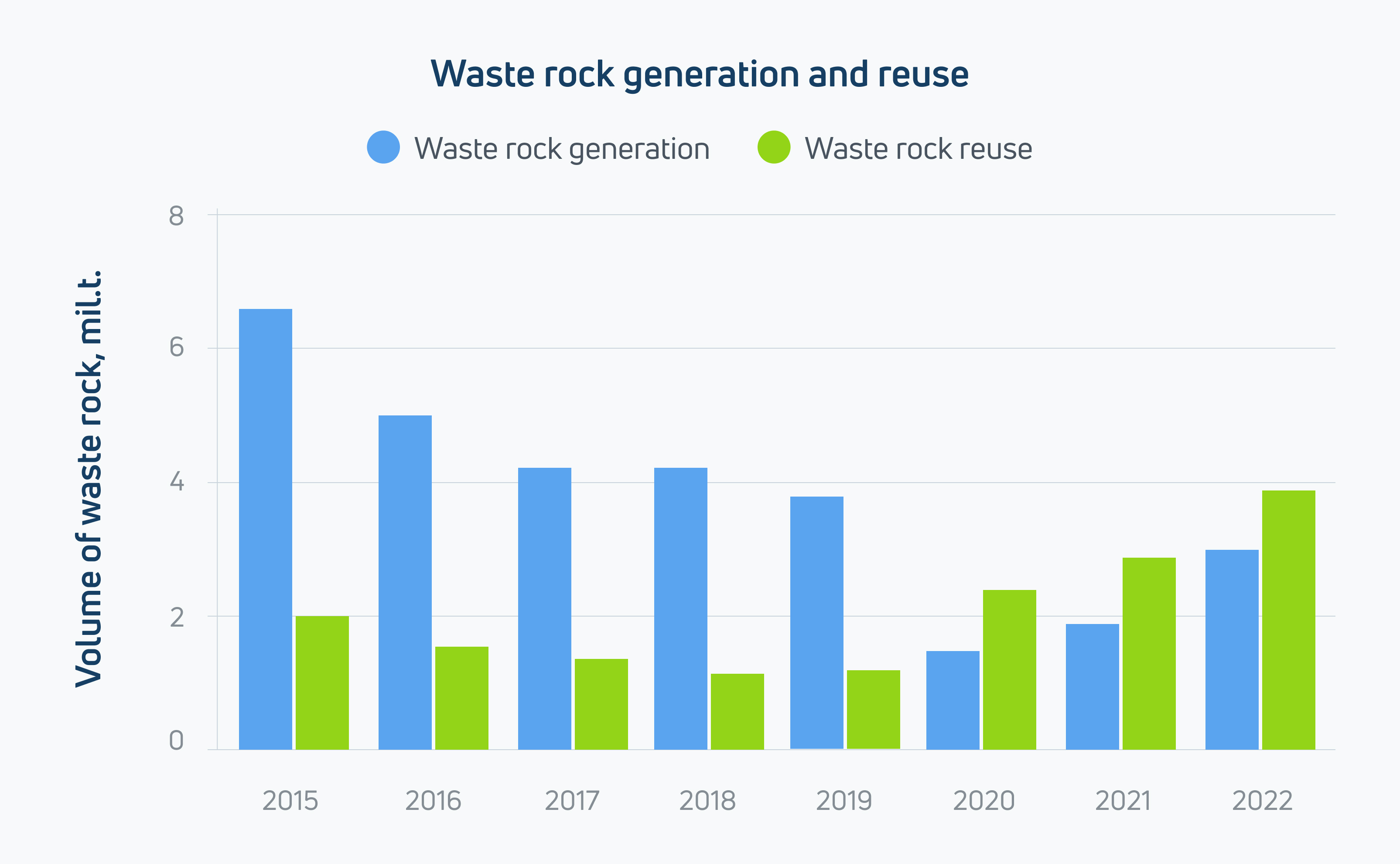
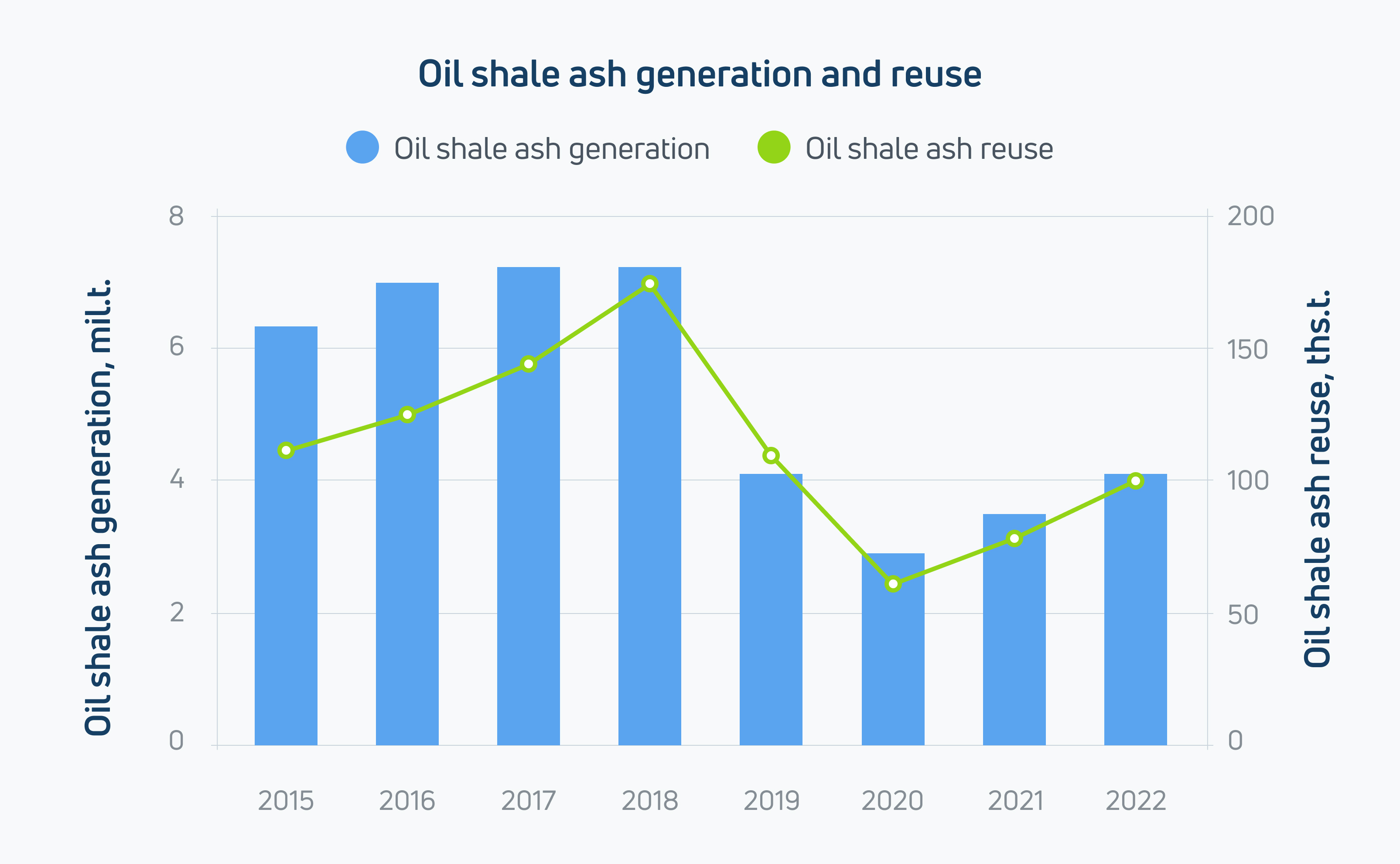
We use waste as a fuel in the production of heat and electricity
It is important for us to reduce the amount of municipal waste disposed in Estonia, therefore we encourage the recovery of waste. Iru waste incineration plant is capable of producing heat and electricity from up to 250,000 tons of mixed municipal waste per year.
Largely due to Iru waste incineration plant, large-scale dumping of mixed municipal waste in landfills has ended in Estonia. In Estonia, almost 300,000 tons of mixed municipal waste is left over from domestic sorting every year.
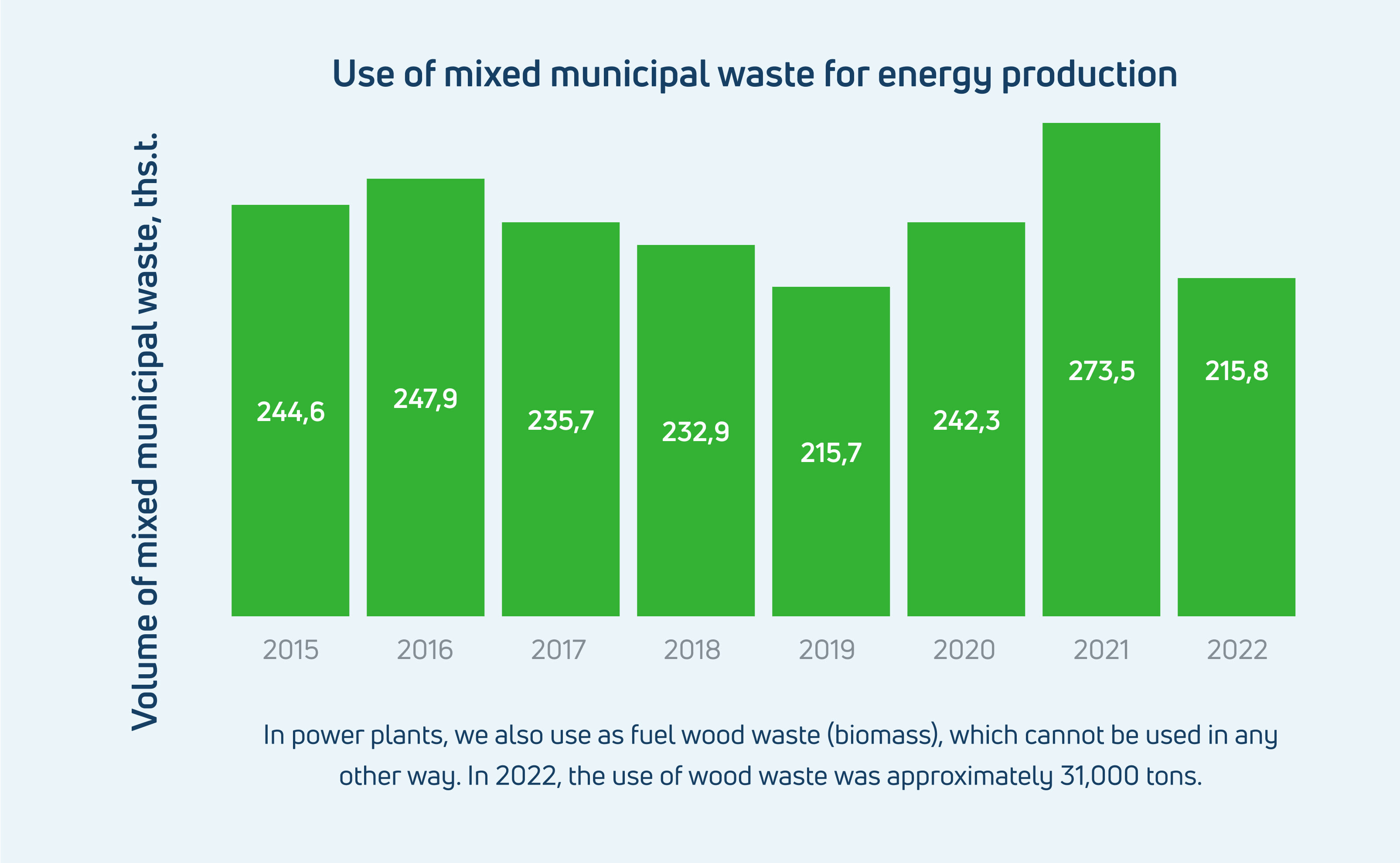
Paid environment fees
We want to use natural resources sustainably and pay a resource fee to the Estonian state for the use of used oil shale, surface and groundwater resources (incl. water pumped out of mines and quarries and cooling water). Based on the polluter pays principle, we pay the Estonian state a pollution charge for air and water emissions and waste disposal. In addition, we pay for production´s CO2 emissions.
Part of the environmental fees is transferred by the state to the local government related to the use of the environment, through which we contribute to the development of local life. Part of the environmental charges is directed by the state to environmental protection investments.
- Resource fees calculated for 2016 will be affected by the retroactive reduction of resource fees
- The resource fees calculated for 2020 will be affected by the lower oil shale ash disposal fee
